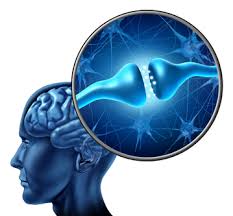Learn How To Meditate Mindfully While Running

Mindfulness meditation or present moment attention to experience lends itself nicely to running. Sports has become a popular metaphor for life and running is the common denominator that links most sports together. Peak performance, the flow, the zone and other descriptions of the present moment have been the subject of study and research for a long time but the last fifteen years has seen an abundance of very positive outcomes based on these studies. Athletes are benefiting by breaking through barriers that were previously thought to be impossible. By using the methods developed by these studies we are re defining human potential and creating new road maps on how to experience these new possibilities.
At the center of all of this research is mindfulness meditation. It has pioneered the expression of “mindfulness in movement” and brings new insight into how mindfulness meditation can be extended into sports and for that matter all activity. Athletes have known about this experience for thousands of years but usually just stumbled upon it through repetition and excellence. It has been only recently that thanks to the research and new training methods athletes can consciously create the flow experience at will. Let’s take a look at how the sports common denominator of running can be enhanced by an extended mindfulness meditation practice.
1. One of the most important traits of a good runner is the ability to tune into the body. Mindfulness meditation teaches us how to fully experience our physical sensations, breath, thoughts and emotions. By monitoring these important signals from the body we can determine how effective out training methods are. We can determine the correct technique by paying close attention to how the body is responding. This is the first step to building an effective training regimen.
2. As you become more in tune with your body through mindfulness you can more accurately sense when you are running with ease. Many runners run too hard and end up stressing their bodies more than they should. The sweet spot for running is the feeling of running with ease. As your conditioning improves so will your definition of ease of effort. Thanks to mindfulness you will know when to accelerate and when to slow down. Staying in that sweet spot of pace is the hallmark of an accomplished runner.
3. Non striving and non-judging are qualities of the mindfulness practice and allow you to “compete” with yourself rather than others. Comparing your times to other runners will only result in more stress and the interruption of the smooth workings of the body. Turning your attention inward so that you are comparing performance only with yourself will lead to much better performance. Monitoring improvement by acceptance of the present moment is actually the best way to improve your times.
4. Some running regimens are way too structured and result in too many miles, laps, intervals and so forth which end up being too mechanical and not in sync with the best way to improve times and conditioning. Step outside the structure and discover how to improvise using the connection to your mind/body. Your mind/body will tell you how much needs to be done in order to get the most out of your run. “No pain no gain” is a thing of the past. Using your mindfulness skills will allow you to maximize your body without breaking it down.
5. Keeping your attention in the present moment will allow you to fully experience the runners “high” through the release of endorphins. If your attention is elsewhere you might miss this. Enjoyment of running will help you stay motivated and bring you deeper into the experience.
6. Fully experiencing your body will allow you to monitor your form. You will be able to influence your core to be engaged, your back to be straight and the rest of the body moving in a fluid way. Remember that the body knows what it needs in order to run effortlessly and to find the flow. Mindfulness will help you to monitor your breath, body, emotions and thought and to notice when they are in sync. This in turn will help you to fine tune your training methods.
7. Check out the book: Running Mindfully http://bit.ly
Learn How To Meditate Mindfully While Running Read More »









